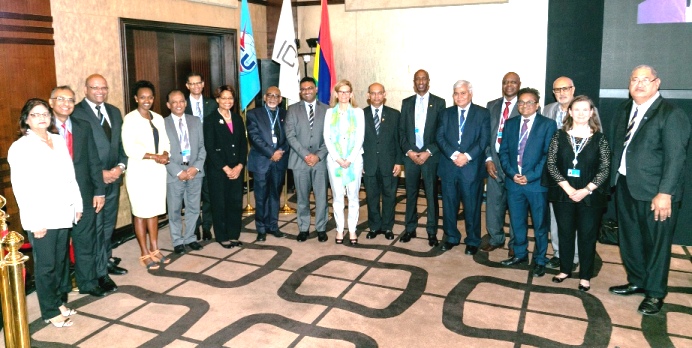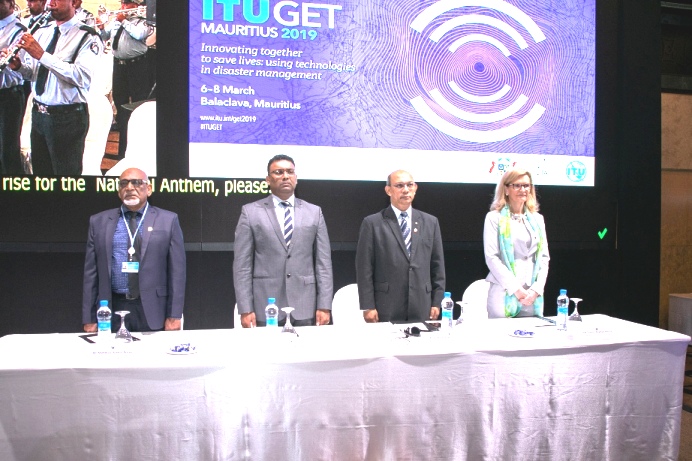The International Telecommunications Union (ITU) has issued recommendations for governments, relief agencies, the private sector and assistance agencies to maximize the benefits offered by disruptive technologies. These include artificial intelligence (AI), the Internet of Things (IoT), Big Data, robotics and drone technology.
The recommendations are part of the Global Forum on Emergency Telecommunications (GET-19), which recently held at Balaclava, Mauritius, to help countries protect and save more lives through the better use of emergency telecommunications.
Recommendations include:
- Systematizing and standardizing of emergency technologies to make the benefits accessible to all. Open standards will help to lower costs, ensure interoperability and enhance scaling.
- Establishing a global repository with information on how digital technologies are being applied for disaster management.
- Training to understand how to properly and responsibly deploy new and emerging digital technologies in crisis settings.
Older technologies such as satellite imagery and seismometers are still the most important methods for detecting, monitoring and accessing disasters.
“We are at a pivotal time in disaster management. Developments in disruptive technologies such as artificial intelligence, the Internet of Things and Big Data are transforming how we approach emergency telecommunications,” said ITU Secretary-General Houlin Zhao. “Leaders from government, industry, civil society and the humanitarian community are now coming together at GET-19 to leverage these technologies to prevent and limit human and economic losses from disasters.”

Delegates at the Global Forum on Emergency Telecommunications (GET-19)
ITU, USTTI launch competition for emergency telecommunications
ITU and the United States Telecoms Training Institute (USTTI ) have launched a competition for nationals of developing countries on emergency telecommunications. Successful candidateswill be trained in the use of information and communication technologies (ICTs) for disaster risk reduction and management, and the development of their national emergency telecommunications plans. Organized by USTTI, the training will be taught in English and will take place from 21 October to 1 November 2019 in Washington, DC, USA with the training, travel and accommodation expenses covered by ITU and USTTI. Submissions will include an application and an essay in response to three questions on emergency telecommunications. The deadline for submissions is 15 March 2019 with winners announced at the World Summit on the Information Society, Geneva, Switzerland, 8-12 April.
GET-19 reaffirmed the importance of preparedness efforts
The Government of Mauritius, host of the GET-19 Forum, is working on new frameworks to review and update the national multi-hazard early warning system. “With the growing intensity and frequency of natural disasters, there is a constant need to enhance the use of technology for disaster management,” said Yogida Sawmynaden, Minister of Technology, Communication and Innovation. “Several automatic weather stations have been set up with sensors to capture real-time data on weather conditions around Mauritius. The island is also equipped with a tsunami warning system which gives a lead time of five to seven hours before a tsunami may hit the coast.”
Strengthening the capacity of countries to develop national emergency telecommunication plans
ITU presented global guidelines to assist national authorities and policy-makers in the development of national emergency telecommunication plans which promote communication and information sharing across all levels of government, within communities at risk, and between public and private organizations. ITU is already helping to develop the plans in Guatemala, Papua New Guinea, Samoa, Solomon Islands and Vanuatu.
Partnering to develop a live disaster connectivity map
ITU presented the disaster connectivity map initiative which aims to provide real-time connectivity information when disasters strike. Information on the type, level and quality of connectivity in disasters is vital to identify gaps, and to make decisions on where and when to deploy often limited human, financial and physical resources to restore connectivity services. A number of ICT industry players – mobile network operators, Internet service providers, Internet and social media platforms – have data that can identify and monitor the status of connectivity, in near-real time. The initiative is developed in partnership with the Emergency Telecommunication Cluster (ETC).
“GET-19 has reaffirmed the need for a collective understanding of risks as well as all phases of disaster management, and the importance of data and trust for strengthening coordination and cooperation among producers, implementers and beneficiaries of emergency telecommunications,” said Ms Doreen Bogdan-Martin, Director of the ITU Telecommunication Development Bureau. “All actions and programmes for prediction, detection, alert and relief must be people-centered: when disaster strikes, it is all about the people.”































